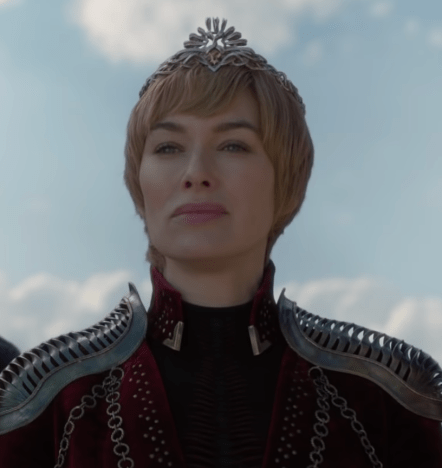The other day in class, one of my students told me that he decided to re-watch Game of Thrones. We’ve talked about this show before in class. He then told me which characters he would like to play in the show, if he ever had the opportunity. Of course, he picked some of the good guys.
He almost fell out of his chair when I told him that I would want to play Cersei Lannister. “She’s my favorite character on the show.”
“You’re kidding! She’s so bad!” he exclaimed, wide-eyed and surprised.
“I know. Wouldn’t it be fun to play someone like that? She’s just so darn rotten.”
And she is.
The truth is, in all of the fiction I’ve read and in all of the movies and television shows I’ve seen, Cersei is my absolute favorite villain. George R.R. Martin knew what he was doing. Additionally, selecting her as my favorite villain has to do with the way Lena Headey played Cersei in the popular series. Her voice, mannerisms, choice of words, pride, narcissism, poor choices, thirst for power, and her disregard for others—even the ones she supposedly loves—make her one of the best villains ever. In the second to last episode when the two key women in the show, Cersei and Daenerys Targaryen, go head to head in their quest for power, Cersei quickly becomes the underdog. We worry for her safety even though we hate her with a passion.
Because that’s the thing about a really good villain. She has to have some redeeming qualities, be it only a few, to relate to her in some way. There are moments when you think she’s normal—a loving and kind mother, perhaps—and other times that she is so ruthless you are left with your mouth agape at her actions (remember what she did to the sept?)
I used to think the green witch in The Wizard of Oz was my favorite villain. Growing up watching this film over and over and over again, she was pure wickedness. However, there’s no backstory for her. How did she become wicked? What drove her to wickedness? What, if any, redeeming qualities did that witch have? In the original story, these questions cannot be answered.

The same is not true for Cersei. We understood what caused her to become vicious. We understood her family dynamic, her connection to Jamie, her twin, and her father’s love for no one. We understood her complicated relationship with her other brother, Tyrion. The bigger picture is told to us drip by drip, and we get why she turned out the way she did. Which is why there are moments along the way where we stop and think: maybe she can be redeemed.
Luckily for us, she never was. She remained the perfect villain throughout the series. Arya Stark announces to the guards as she approaches King’s Landing that she has “come to kill Cersei,” and we all rejoice, thinking Arya will be the one who will take her down. We’re rooting for Arya—and anyone else who wants to punt Cersei from the Red Keep.
But it’s not Arya who does the deed. It’s another character who we think is all goodness, and then changes at the last minute, her thirst for power too great to overcome. (Truthfully, we saw signs of this character’s dark turn throughout, but it was nonetheless shocking when it actually happened).
All this to say, and we know this to be true, villains are fun to dissect. Moreover, as the great Simon Sinek says and I’ve found this to be true in all I do and write, you have to know the “why” behind anything to make it valuable. Cersei’s why was clear. So was Arya’s. So was Daenerys’.
I’ve been thinking about this a lot as I’m writing a book set in the late 1950s with my first female villain in it. I have to construct her carefully so that you feel both empathy and detestation for her and what she will do to her own sister. She’s ruthless in her own way. Perhaps we know people like this in real life that can play into how we craft our characters?
There’s a lot to learn from deconstructing bad guys. Or in this case, bad girls.

